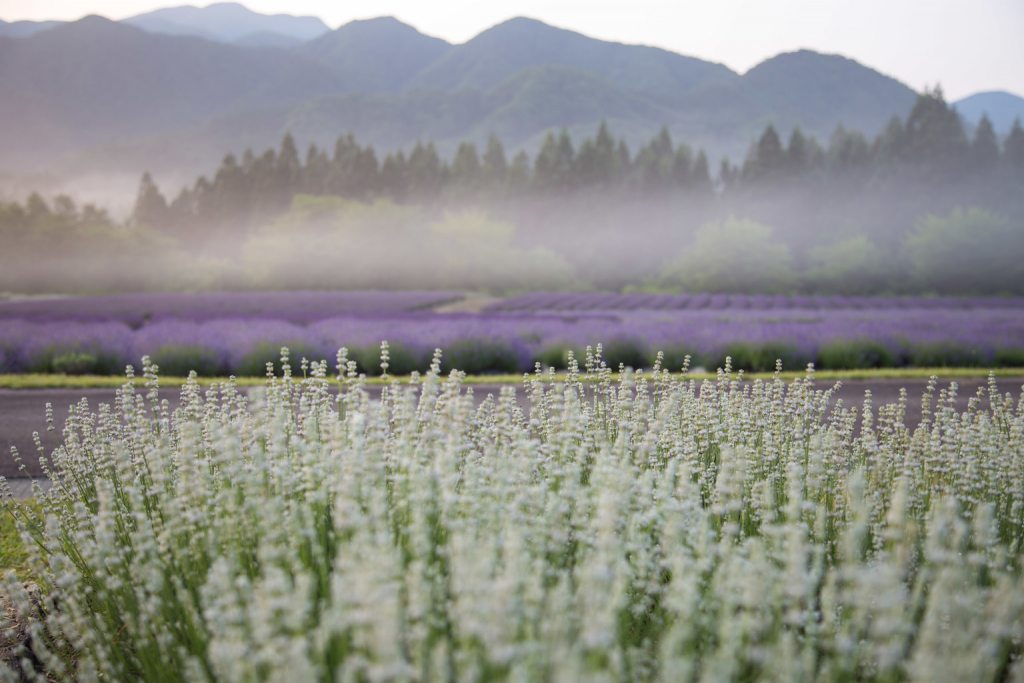The tranquility of Japan’s temples and is hearty and healthy, and chasing it down with shrines, vast landscapes, healthy food and an onsen soak all make for a wellness vacation, or “wellcation.” Specifically, a trip to Akita Prefecture is a serene immersion in Japan’s wild and wonderful north. The local Akita guides and organizations are welcoming everyone to their corner of travel paradise.
This prefecture offers some of the best hot spring soaks, preferably in the outdoor pools gazing at the moon. Grown in the lush nature of Akita, food is hearty and healthy and chasing it down with a cup of sake is bliss. Kiritanpo nabe (kiritanpo hot pot), iburigakko (smoked daikon), Inaniwa udon and Hinai chicken are a few must-tries. Akita is also well-known for its blankets of snow that Akita dogs love, its stunning autumn scenery and cherry blossoms that erupt in bloom just after Tokyo’s sakura have all fallen down. And come summer, there is an abundance of beautiful flowers of all colors and varieties blooming all across Akita.
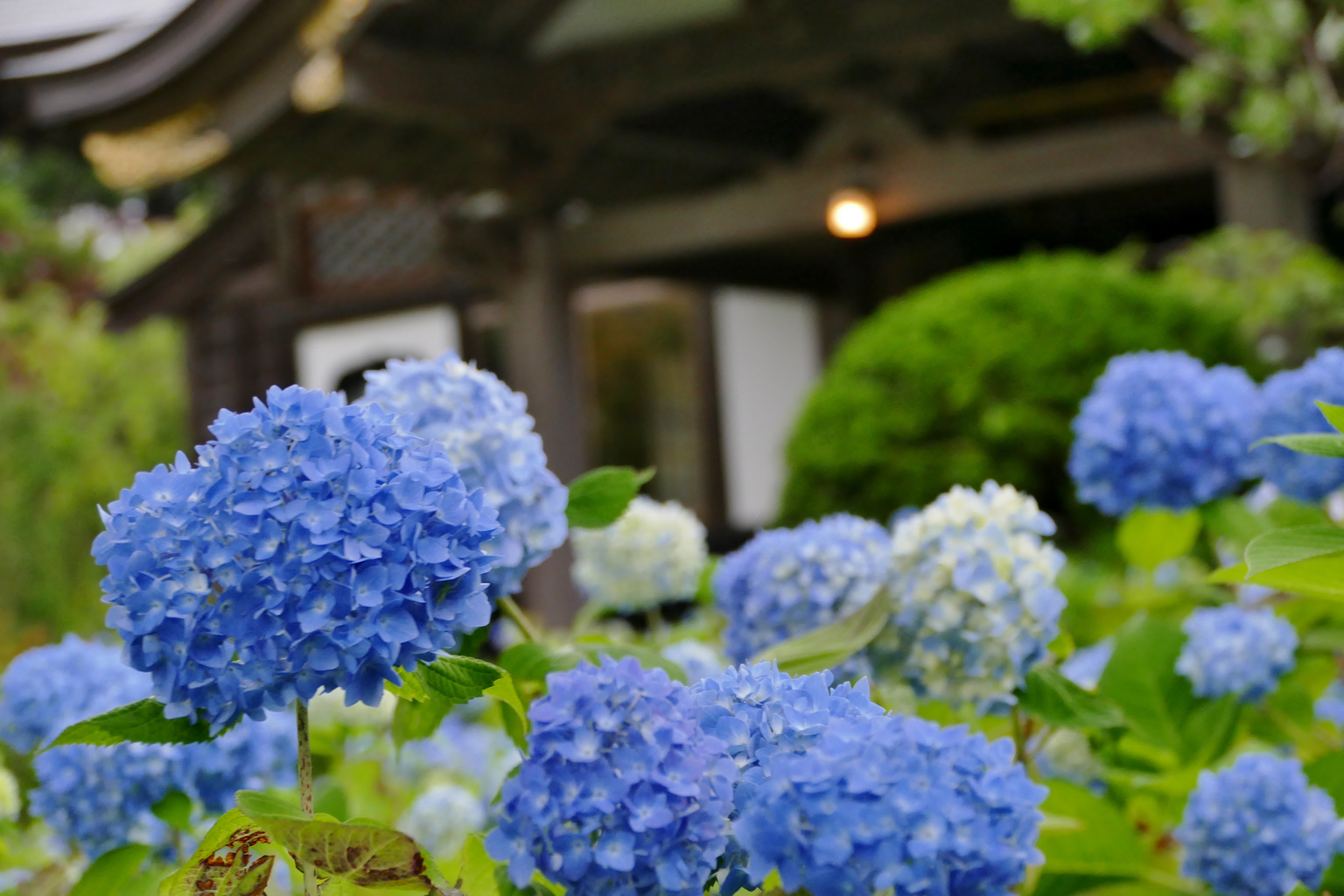
Hydrangeas at Unshoji Temple
A peaceful Zen temple should be on every wellcation itinerary. Unshoji Temple in Oga city is rightly dubbed “Hydrangea Temple,” as from mid-June to early July it is carpeted by a sea of blue hydrangeas. The port town of Kitaura and the Oga Sea spread out behind the temple, so the blue of the flowers and the blue of the sea create an unbelievable landscape only witnessed from Unshoji Temple. At night, the hydrangeas are illuminated resulting in a radiant inky blue.
The temple’s deputy head priest has spent more than 15 years cultivating these hydrangeas, counting more than 1,500, all derived from a single original plant. This special variety produces a larger number of petals due to the priest’s unique cultivation method, and when in full bloom, the flower is dyed vivid blue. The flowers spread out like a thick blue carpet around the temple, and this ethereal shade of blue holds special meaning to the locals.
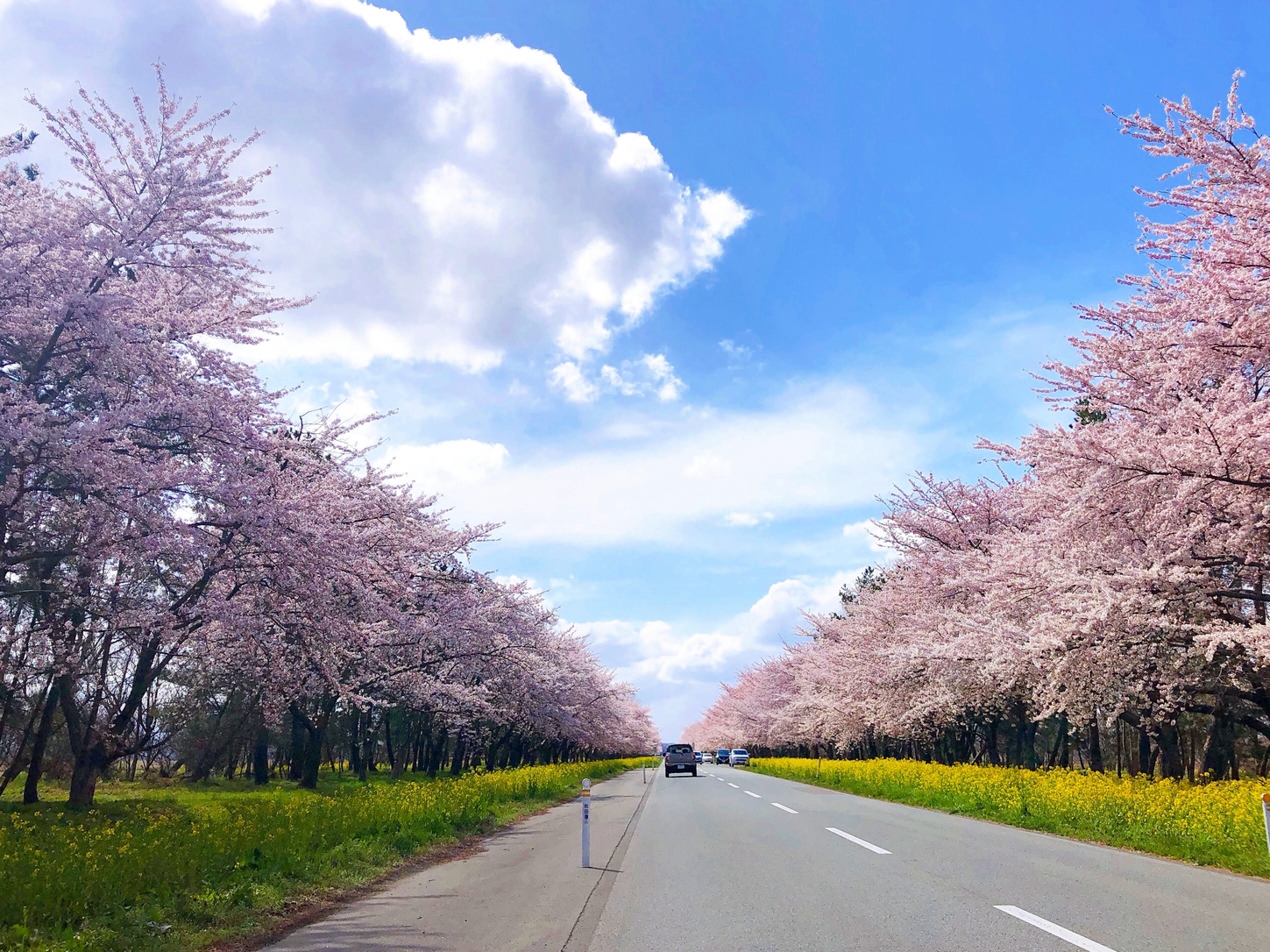
Cherry Blossoms and Nanohana Road Through Ogata Village
When it comes to flowers, “less is more” is simply untrue. Case in point: the 11 kilometers of Prefectural Road 298 lined with about 4,000 cherry blossom trees and nanohana flowers underneath, that create a magical road of pink and yellow. These heralds of spring bloom simultaneously at the end of April and the beginning of May. Ogata village also has a nanohana field of roughly 11 hectares, which is in full bloom in early May.
Come summer, the same stretch of road is dotted with sunflowers. Locals from Ogata village have been planting these sunflowers since 2013, as well as cultivating the nanohana for 30 years and the cherry trees for 50. The whole village is also known for rice fields on what is reclaimed land from a lagoon in 1977. Whether you stay to roam the fields, or zoom down the straight 298 Road, Ogata is well worth a visit.
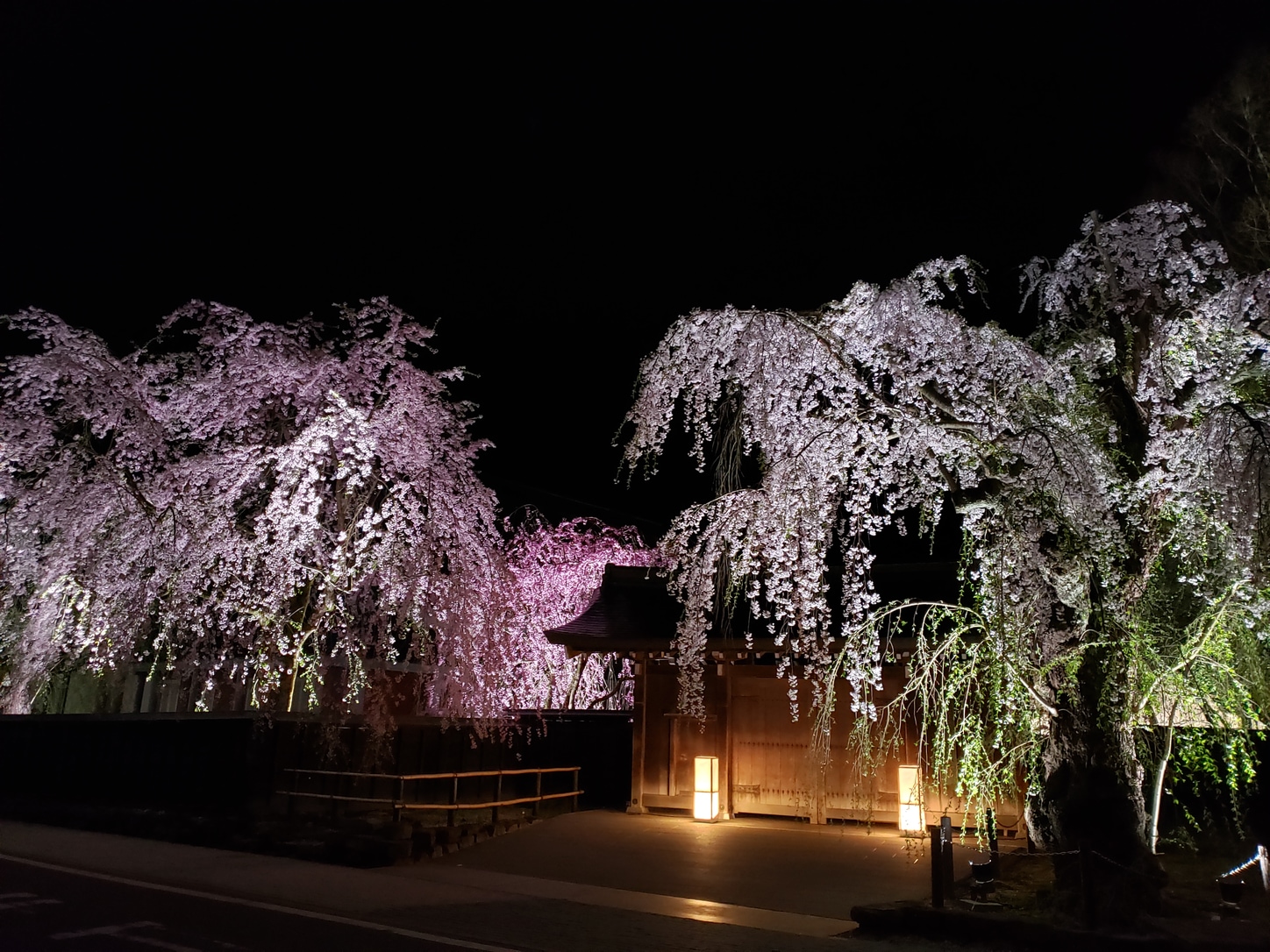
Cherry Blossoms in the Samurai Town of Kakunodate
The castle town of Kakunodate, which dates back to 1620, is a slice of well-preserved history that merits a visit any time of the year. Its streets are lined with old samurai houses, some of which have been converted into guesthouses. Contrasted with the dark wooden walls of these residences on Bukeyashiki Street are hundreds of weeping cherry blossoms of Kakunodate. They look stunning and draw countless visitors in spring. The nearby Hinokinai River has around 400 classic somei-yoshino sakura trees forming a two-kilometer tunnel down its banks, usually blooming in late April to early May. Both spots are illuminated at night, every moment of the ephemeral blossoms being cherished.
Kakunodate is famed for its history and time capsule feel. Local tourism businesses encourage visitors to dress in a kimono or try a rickshaw ride. Between teahouses, dango sellers and local cuisine restaurants, you will never run out of things to do here, even when sakura is no more.

Wisteria in Tonose Fuji no Sato
Tonose Fuji no Sato in Odate city has the word “fuji” (wisteria) right in its name. Locals also lovingly call it “earthly paradise,” as it’s a secluded place full of naturally growing wild wisteria trees. During May, white, pink and purple flowers hang from the climbing branches, and the air is sweet with their scent. The wisteria are surrounded by a forest and rice fields, immersed in the tranquility of nature. It’s free to enter, with the option to donate to its maintenance fund.
If you miss the blooming period of wisteria, there is the nearby Odate Rose Festival held at the Ishida Rose Garden in June, where around 500 different varieties of roses are in full bloom. Odate city is also known as the birthplace of Hachiko, the famous Akita dog immortalized with a statue outside Shibuya Station in Tokyo. While in the area, check out the Akita Dog Visitor Center called Akita Inu no Sato and the Akita dog statues outside Odate Station.
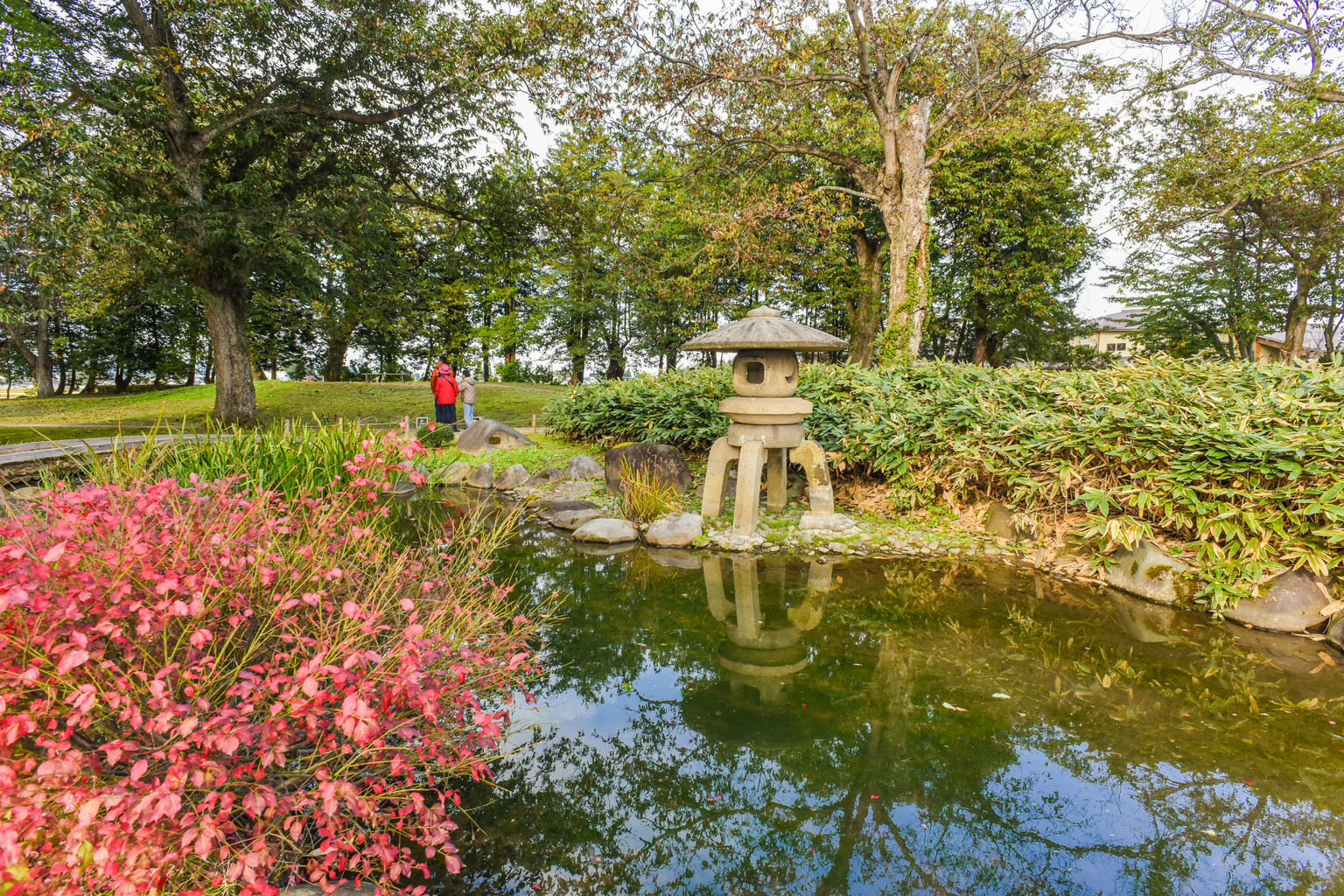
Former Ikeda Family Gardens
Located on the central plains of Akita Prefecture, the city of Daisen has long been known as an agricultural powerhouse of Japan. One of the three largest landowners in the entire Tohoku region, the Ikedas were a prominent family in Akita for centuries, and today their lush gardens are public property opened to everyone several months a year. The gardens have views of the Ou Mountains and Mount Chokai and are surrounded by rice fields. According to old stories, Buntaro Ikeda appreciated the beauty of rice as much as any bonsai or ikebana arrangement.
Daisen is also one of Japan’s best destinations for viewing fireworks, namely the Omagari Firework Festival that takes place in August. Around 18,000 skyrockets bloom in the sky, making it as bright as day. Fireworks in Japan are fittingly called hanabi, or fire flowers. So whether you want to see flowers on the ground or in the sky, Akita Prefecture is a natural kaleidoscope of color.
Start planning your future Akita visit at stayakita.com
Sponsored Post

